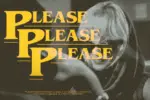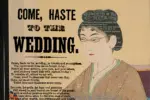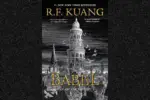SPOILERS
CW: Self Harm, Spoilers
We’ve heard of shipping fictional characters: Jim and Pam, Blair and Chuck, Belly and Conrad… but what about the opposite? Surely, you’ve read a book and thought, these characters absolutely should not have ended up together. While some literary couples are just simply ill-matched, sometimes authors succumb to the pressure of a romance plot in their story. Female writers in all genres– especially young adult– have fallen into unnecessary romance plots. Reading a historical fiction, thriller, drama or action-focused plot and then suddenly diverting your attention to a love interest can feel abrupt. The storyline may arguably feel out-of-place and be better off without it.
A romance plot has historically been essential to any book in the romance genre, dating back to classic fairy tales.The romance genre has also been historically underrated and overlooked, specifically because it is written by women for women. The genre’s popularity has grown in recent years, serving as a possible reason for the rising trend of unnecessary romantic subplots. While including romance in books can help explore the intricacies of a character, the inclusion of romance is often unnecessarily included for profit or pressure from publishers. After all, publishing is a business, and romance plots may amass a wider audience of readers.
Just look at BookTok, where there is a palpable and popular desire for the romance genre. By including two characters that fans can ship and pine over, authors gain more attention for their book and have a greater chance at publishing another.
Though “The Hunger Games” by Suzanne Collins was published before the creation of TikTok, the love triangles generated lots of attention for the series. Also ripe with public killings, class divides, and a brewing civil war, some readers argue the book spent too much time focusing on a love triangle between Katniss, Peeta, and Gale. If Collins never included the iconic love-triangle that solidified the young adult feel of the novel, it may not have had the same success. The book was released at the height of the dystopian literature craze, so missing a subplot between the female protagonist and a male love interest may have undesirably narrowed her audience. Though, fan advice was definitely heeded in the later released prequel “The Ballad of Songbirds and Snakes,” as the history of Panem and cruelty of war is further explored through Coriolanus Snow. There is certainly no character romance that is overly generous for the plot.
Another reason for these unnecessary inclusions of romance could be due to the history of female writers. Writing has long been a male-dominated industry, and while women read more often than men, there have been more men than women getting their novels published, reviewed and awarded. A majority of female writers are pushed into writing for genres known for a strong female audience. As quoted in “Sexism in the Writing and Publishing Industries,” author Shannon Hale recounted a book event held at school, in which only the girls were allowed to attend an assembly about her book:
“This, Hale writes, reinforces ‘the falsehood that what men say is universally important, but what women say only applies to girls.’”
Publishers must think the same, which makes women more likely to be published for their works in genre fiction –such as romance and fantasy– rather than their works in literary fiction.
While romance in all genres can be exciting to read and reveal the complexities of a character, sometimes it can feel forced and out-of-place in a novel. Readers out there may not want the happy gift-wrapped ending alluding to marriage as the ultimate goal.
A good example of avoiding unnecessary romance is shown in “Fatality” by Caroline B. Cooney. In this throwback thriller, our protagonist’s love interest never overtakes our main plot. After new information is revealed about a murder that Rose potentially witnessed as a child, Rose steals a police car in order to keep her childhood diary from being read. Rose absolutely refuses to share its content with the police or with anyone else for that matter like longtime-crush Alan. She is forced back to memories of her childhood friendships and nights spent watching her brother’s band, all to solve a murder or two that took place ten years prior. While Rose’s crush on Alan is eluded to multiple times throughout the book, it never distracts from her own struggles. In fact, they never get together, cementing the childhood crush as just that. This crush rounds out Rose’s character as authentic and allows readers to better understand her behavior. The crush plot line wasn’t included for profit, only to elevate Rose’s character.
For another read with a new-age romance plot that is nowhere close to the original, there is “Conversations with Friends” (CWF) by Sally Rooney. While this book has a happy ending for our main romances, there is no bow-wrap ending, as much is left unresolved within the main character herself. College student and poet Francis begins an affair with older actor Nick, while navigating her friendships with his wife Melissa and her ex-girlfriend Bobbi. The relationships in this novel are messy, overlapping and vulnerable, including Francis’s relationship with her own body. After multiple couples made out of the four friends break-up and get back together, Nick and Francis decide to reconnect in a dramatic last line. “Come and get me,” says Francis, following a month-long break-up from Nick in which she gets back with Bobbi. CWF shows that in our modern world with hyper specific labels and commitment issues, romance is not as one-note as it used to be; It can be interwoven with our identity and self-worth, like it is for Francis, and can serve as a coping mechanism in our lowest points of life. Rooney uses romance to propel Francis’s coming-of-age plotline and doesn’t allow Francis’s problems to go away just because she gets back together with Nick. Francis’s life revolves around more than just her romance, touching on her past with self-harm, struggling relationship with her parents, and new endometriosis diagnosis, setting it apart from your everyday romance novel.
For more of an overview on romance plots dating back to 7th century B.C., check out “The Penelopiad” by Margaret Atwood. The Greek hero Odysseus is a textbook romantic hero who is kept from reuniting with his true love Penelope because of a fated quest from the gods. Atwood provides a different viewpoint; in a retelling of Homer’s The Odyssey from Penelope, she tells her version of events that contradict the most famous accounts of Odysseus’s heroic stories. A romantic at heart no matter how much she wishes she wasn’t, Penelope relays her time with the twelve maids who Odysseus sentences to death along with the suitors who he slaughters after coming home from his ten-year voyage. Though she longs for Odysseus to love her, Penelope ends up wandering through the underworld still in search of love that she has never received. By providing a 21st century lens on the classic story, Atwood displays the contrast between the idealized fairy-tale romance Penelope wishes for and the realistic relationship a 1200 B.C. wife would have. While Penelope falls victim to the romance plot, Atwood certainly doesn’t, including blatant commentary about the history and stereotypes of romance in her novel.
Despite the escapism and enjoyment the old and new romance plots provide, they should sometimes be left in their own genre. Though a classic romance may be expected in novels authored by women, it has been long apparent that romance isn’t necessary for a female-written bestselling book. As romantic subplots evolve with the changing landscape of the relationship world, authors should make sure they are including romance because they alone want to and because the novel will truly benefit from it.

















